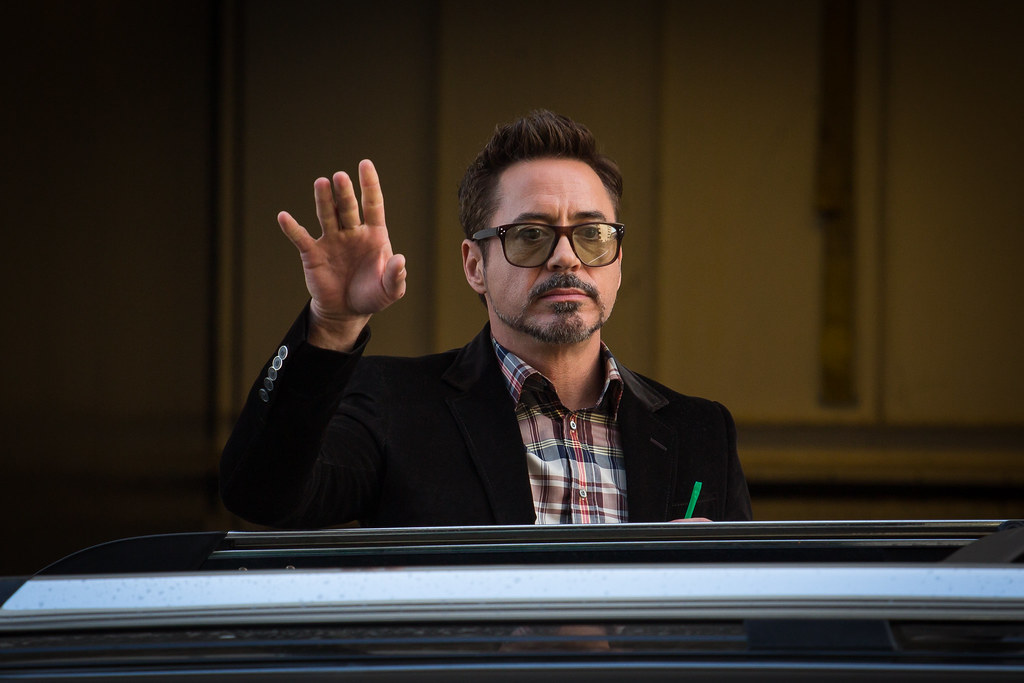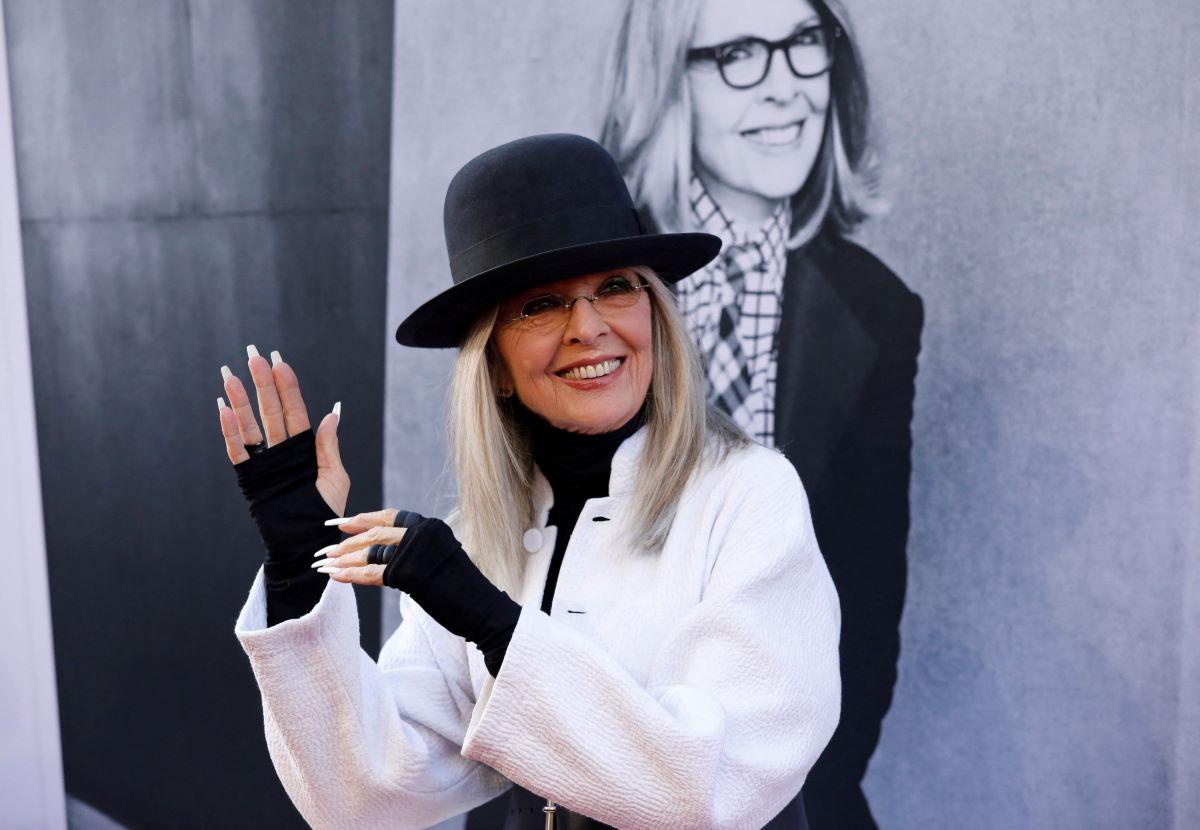
Hollywood, and indeed the world, collectively paused on October 11, when news broke of the passing of Oscar-winning actress, filmmaker, and author Diane Keaton at the age of 79. A true luminary of the silver screen, Keaton captivated audiences for over five decades with her unparalleled talent, distinctive style, and an endearing blend of emotion and eccentric likability that defined her most beloved characters. Her departure leaves an indelible void, but her extraordinary body of work ensures her legacy will shine brightly for generations to come.
From her iconic portrayal of Kay Adams in “The Godfather” films to her Academy Award-winning turn as the idiosyncratic titular character in “Annie Hall,” Keaton was a chameleon, effortlessly transitioning between dramatic depth and comedic brilliance. She was an artist who always sought authenticity, taking on roles that resonated with her spirit and often infusing them with parts of her own vibrant personality. Her influence transcended acting, extending into fashion, photography, and even directing, painting a portrait of a woman driven by a profound and multifaceted artistic curiosity.
As we reflect on the life of this remarkable talent, we embark on a journey through her formative years and the defining moments that shaped her into the cinematic giant she became. It is a tribute to a woman who, in her own words to ABC News in 2022, was “very fortunate to have many opportunities that came my way” and cherished the “freedom” she had to make her choices, thereby making her life truly interesting. Today, we celebrate those choices and the magnificent career they forged.
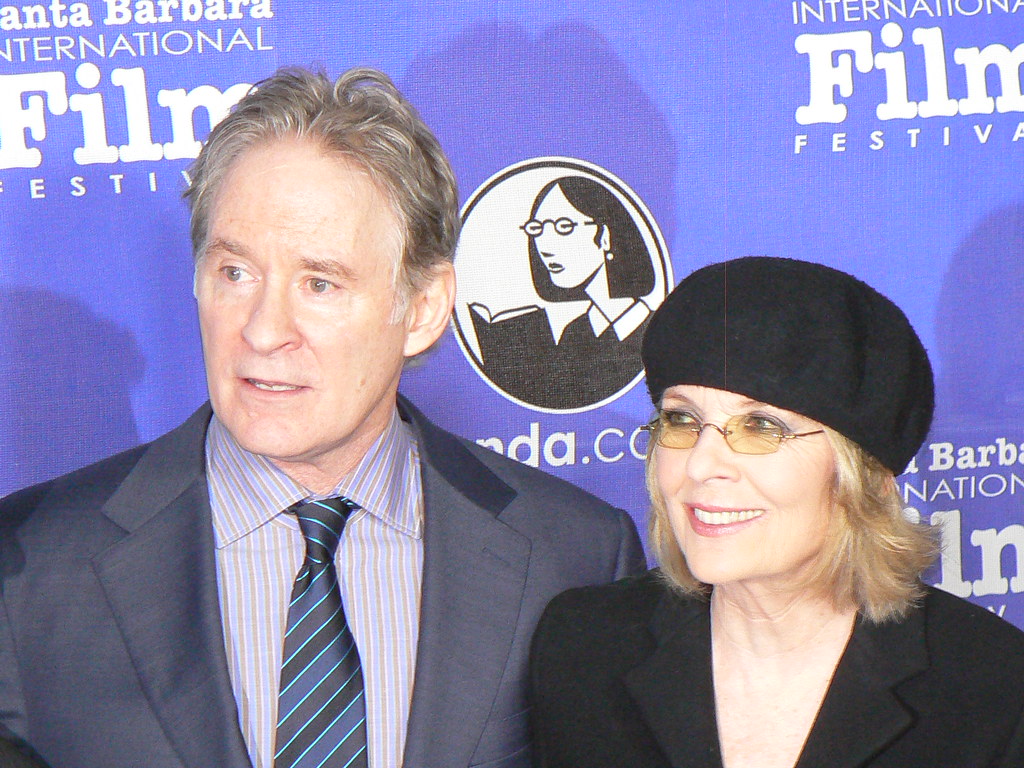
1. **A Life Remembered: The News of Diane Keaton’s Passing**The news of Diane Keaton’s death, confirmed on October 11, sent a wave of sorrow across the entertainment industry and beyond. People magazine cited a statement from the actress’ family, which revealed the cause of death as pneumonia. At 79 years old, Keaton had maintained an active and impactful presence in Hollywood, making her passing particularly poignant for countless fans and collaborators.
Initial details surrounding her death were not immediately available when the news first broke on a Saturday. The Los Angeles Fire Department later confirmed that it had responded to a medical call at Keaton’s Brentwood home at 8:08 a.m. local time on Saturday, and subsequently transported a patient to the hospital. These reports provided a clearer picture of the final moments of a life that had touched so many.
In their heartfelt statement, Keaton’s family extended their profound gratitude for “the extraordinary messages of love and support” they received during this difficult time. They also highlighted two causes close to Diane’s heart: her deep affection for animals and her steadfast support for the unhoused community. As a testament to her compassionate spirit, the family suggested that “any donations in her memory to a local food bank or an animal shelter would be a wonderful and much appreciated tribute to her.”
Upon learning of her passing, Hollywood luminaries quickly took to social media to mourn the actress, sharing personal anecdotes and tributes. Co-stars like Mary Steenburgen and Goldie Hawn expressed their sorrow, as did filmmaker Nancy Meyers, who had collaborated with Keaton on beloved films such as “Something’s Gotta Give” and “Father of the Bride.” Meyers’ Instagram post captured the collective sentiment, stating, “We have lost a giant. A brilliant actress who time and again laid herself bare to tell our stories.”

2. **Early Ambitions: From Broadway Understudy to Woody Allen’s Muse**Born Diane Hall on January 5, 1946, in Los Angeles, Diane Keaton grew up as the oldest of four children. Her mother, a stay-at-home wife, harbored her own acting aspirations, even competing in a pageant for homemakers under the name “Mrs. Los Angeles,” as recounted by The Hollywood Reporter. It was this early exposure to the world of performance, perhaps, that first ignited Diane’s own artistic spark.
Her educational journey saw her studying drama at Santa Ana College in Orange County, followed by a brief stint at the University of Southern California. However, the true calling of the stage soon led her to New York City, where she enrolled in the prestigious Neighborhood Playhouse drama school. It was here, amidst the vibrant energy of the city’s theatrical scene, that she began to hone the craft that would define her career.
In 1968, Keaton landed a significant role as an understudy for the part of Sheila in the original Broadway production of “Hair.” This early experience brought her some notoriety for her steadfast refusal to disrobe at the end of Act I, even though nudity was an optional choice for actors, with a $50 bonus attached for those who participated. After nine months with “Hair,” she auditioned for Woody Allen’s stage production of “Play It Again, Sam.” Despite nearly being overlooked for being two inches taller than Allen, she secured the role and subsequently received a Tony Award nomination for Best Featured Actress in a Play.
This pivotal collaboration with Woody Allen would soon extend beyond the stage, forming one of the most significant artistic partnerships of her early career. Allen would later credit Keaton as his muse, recognizing the unique blend of vulnerability, intelligence, and a distinctly kooky charm that she brought to their shared creative endeavors. Their connection was foundational, laying the groundwork for a series of films that would cement Keaton’s place in cinematic history.
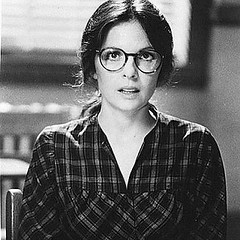
3. **The Godfather Saga: Crafting Kay Adams, the “Woman in a World of Men”**Before her breakthrough, Diane Keaton began to build her filmography with smaller roles. In 1970, after appearing in a deodorant commercial for Hour After Hour, she made her film debut in “Lovers and Other Strangers.” This was followed by a series of guest roles on television series, including “Love, American Style,” “Night Gallery,” and “Mannix,” demonstrating her versatility even in the nascent stages of her career.
Her true breakthrough arrived two years later with Francis Ford Coppola’s 1972 cinematic masterpiece, “The Godfather.” Keaton was cast as Kay Adams, the girlfriend and eventual wife of Michael Corleone, portrayed by Al Pacino. Coppola, having first noticed Keaton in “Lovers and Other Strangers,” reportedly cast her because of her burgeoning reputation for eccentricity, which he believed she could infuse into the role. Keaton herself acknowledged this perception, claiming she was commonly referred to at the time as “the kooky actress” of the film industry.
Keaton’s performance in “The Godfather” was, in many ways, loosely informed by her real-life experience during the film’s production. She described both experiences as being “the woman in a world of men,” a sentiment that perfectly encapsulated Kay’s position within the patriarchal Corleone empire. The film was an unprecedented critical and financial triumph, becoming the highest-grossing film of the year and earning the Academy Award for Best Picture, instantly elevating Keaton to international recognition.
Two years later, Keaton reprised her role as Kay Adams in “The Godfather Part II.” Initially, she expressed reluctance, stating, “At first, I was skeptical about playing Kay again in the Godfather sequel. But when I read the script, the character seemed much more substantial than in the first film.” Indeed, Kay’s character underwent a dramatic transformation in the sequel, evolving into a woman embittered by her husband’s deepening involvement in his criminal enterprise. While some critics initially felt her character’s importance was minimal, with Time writing she was “invisible in The Godfather and pallid in The Godfather Part II,” Empire magazine offered a contrasting view, asserting that Keaton “proves the quiet lynchpin which is no mean feat in [the] necessarily male dominated films.”
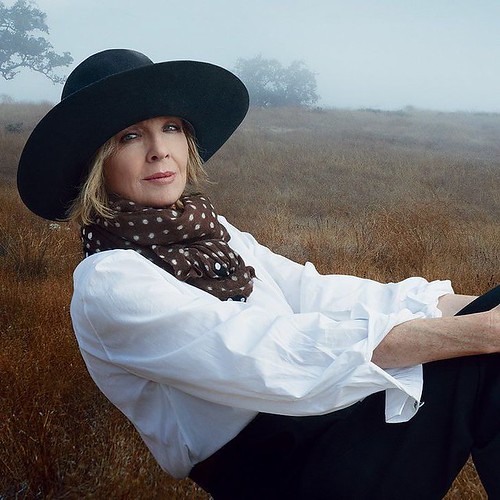
4. **The Unmistakable Annie Hall: An Oscar-Winning Icon and Fashion Trailblazer**The 1970s proved to be a fertile ground for Diane Keaton’s collaborations with Woody Allen, a partnership that would yield some of her most memorable and iconic performances. In 1977, she starred in Allen’s romantic comedy-drama “Annie Hall,” a film that many believed to be an autobiographical exploration of his relationship with Keaton herself. The character of Annie Hall was loosely based on Keaton, with “Annie” being her nickname and “Hall” her original surname, intertwining her true identity with this fictional creation.
Allen meticulously wove many of Keaton’s genuine mannerisms and her distinctive self-deprecating sense of humor into the role, making Annie an utterly unique and relatable figure. Director Nancy Meyers later observed, “Diane’s the most self-deprecating person alive,” a trait that became a cornerstone of Annie’s charm. Keaton herself noted that Allen had crafted the character as an “idealized version” of herself. The film saw the two stars as a frequently on-again, off-again couple navigating the complexities of life and love in New York City, their dynamic becoming a touchstone for modern romance.
Her performance was later immortalized by CNN as “awkward, self-deprecating, speaking in endearing little whirlwinds of semi-logic,” while Allen famously described it as a “nervous breakdown in slow motion.” “Annie Hall” not only emerged as a major critical and commercial success but also swept the Academy Awards, winning Best Picture. Keaton’s portrayal earned her the Academy Award for Best Actress, cementing her status as a leading lady with an extraordinary ability to blend humor with profound human vulnerability.
Feminist film critic Molly Haskell lauded Keaton’s work, writing, “Keaton took me by surprise in Annie Hall. Here she blossomed into something more than just another kooky dame—she put the finishing touches on a type, the anti-goddess, the golden shiksa from the provinces who looks cool and together, who looks as if she must have a date on Saturday night, but has only to open her mouth or gulp or dart spastically sideways to reveal herself as the insecure bungler she is, as complete a social disaster in her own way as Allen’s horny West Side intellectual is in his.” Her performance was further recognized by Premiere magazine in 2006, ranking her 60th on its list of the “100 Greatest Performances of All Time.” The magazine noted, “It’s hard to play ditzy. … The genius of Annie is that despite her loopy backhand, awful driving, and nervous tics, she’s also a complicated, intelligent woman. Keaton brilliantly displays this dichotomy of her character, especially when she yammers away on a first date with Alvy (Woody Allen), while the subtitle reads, ‘He probably thinks I’m a yoyo.’ Yo-yo? Hardly.”
Beyond her captivating performance, Keaton’s eccentric wardrobe in “Annie Hall” sparked an unlikely fashion revolution in the late 1970s. Her signature style, largely consisting of vintage men’s clothing—including neckties, vests, baggy pants, and fedora hats—made her an instant icon. A portion of the clothing seen in the film came directly from Keaton’s personal collection, as she was already renowned for her tomboyish clothing style years prior to “Annie Hall.” Ruth Morley, the film’s costume designer, further shaped this look. Almost immediately after the film’s release, men’s clothing and pantsuits became a popular and empowering fashion choice for women, reflecting Keaton’s profound cultural impact.

5. **Beyond Comedy: Embracing Darkness in “Looking for Mr. Goodbar”**In the wake of her burgeoning fame and the immense success of “Annie Hall,” Diane Keaton found herself on the cover of Time magazine on September 26, 1977. The accompanying story boldly dubbed her “the funniest woman now working in films,” a testament to her undeniable comedic prowess. However, Keaton, ever the artist seeking new challenges, was poised to demonstrate a far greater range than her lighthearted comic roles suggested.
Later that same year, she made a significant departure from the comedic genre, taking on the highly coveted lead role in the drama “Looking for Mr. Goodbar.” This film, based on the novel by Judith Rossner, marked a pivotal moment in her career, showcasing her ability to delve into darker, more complex psychological territory. Written and directed by Richard Brooks, the film explored themes far removed from the charming neuroses of Annie Hall.
In “Looking for Mr. Goodbar,” Keaton portrayed Theresa Dunn, a Catholic schoolteacher for deaf children who navigates a perilous double life. By night, Theresa frequented singles bars, engaging in promiscuous , a stark contrast to her daytime persona. Keaton was drawn to the role, viewing it as a “psychological case history,” indicative of her desire to explore the intricacies of human behavior and experience on screen. Her decision to undertake such a challenging and unconventional role underscored her dedication to her craft.
Time magazine, in the very same issue that celebrated her comedic talent, commended Keaton’s courageous role choice. The publication criticized the then-restricted roles typically available for female actors in American films, noting, “A male actor can fly a plane, fight a war, shoot a badman, pull off a sting, impersonate a big cheese in business or politics. Men are presumed to be interesting. A female can play a wife, play a , get pregnant, lose her baby, and, um, let’s see … Women are presumed to be dull.” The article continued, praising Keaton’s performance: “Now a determined trend spotter can point to a handful of new films whose makers think that women can bear the dramatic weight of a production alone, or virtually so. Then there is Diane Keaton in Looking for Mr. Goodbar. As Theresa Dunn, Keaton dominates this raunchy, risky, violent dramatization of Judith Rossner’s 1975 novel about a schoolteacher who cruises singles bars.” This role firmly established Keaton as an actress capable of immense dramatic depth.
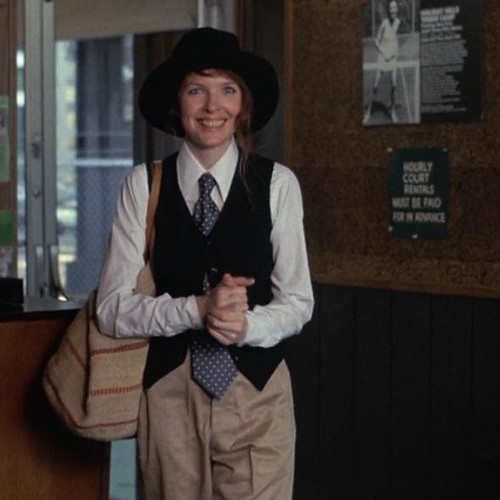
6. **The Artistic Soul: Photography and Unfulfilled Musical Aspirations**While Diane Keaton is celebrated primarily for her acting, her artistic curiosity extended into other creative realms. She once expressed, “I had a lifelong ambition to be a singer,” a lesser-known aspect of her multifaceted talents. Indeed, in the 1970s, she briefly pursued a career as a recording artist, hinting at what might have been a different path for the star.
Her first foray into recorded music was in 1971, as part of the original cast recording for the Broadway production of “Hair.” Later in 1977, the same year as her Oscar win, she began recording tracks for a solo album. However, for reasons unknown, this finished record never materialized, leaving fans to imagine the potential vocal artistry that could have been. Though her singing career remained largely unrealized, it underscored her deep-seated desire for creative expression beyond the confines of acting.
Keaton, however, found greater and more tangible success in the medium of still photography. Much like her character in “Annie Hall,” who also had an affinity for the camera, Keaton had long cherished photography as a favorite hobby, an interest she initially picked up from her mother during her teenage years. This passion, cultivated quietly for years, would eventually blossom into a more serious artistic pursuit.
While traveling in the late 1970s, Keaton began to explore her avocation with renewed intensity. In a 2003 recollection, she explained, “Rolling Stone had asked me to take photographs for them, and I thought, ‘Wait a minute, what I’m really interested in is these lobbies, and these strange ballrooms in these old hotels.’ So I began shooting them.” She found a liberating sense of adventure in these deserted, forgotten spaces: “These places were deserted, and I could just sneak in anytime and nobody cared. It was so easy and I could do it myself. It was an adventure for me.” This passion culminated in the publication of “Reservations,” a collection of her evocative photos of hotel interiors, in book form in 1980, firmly establishing her as a respected photographer in her own right.
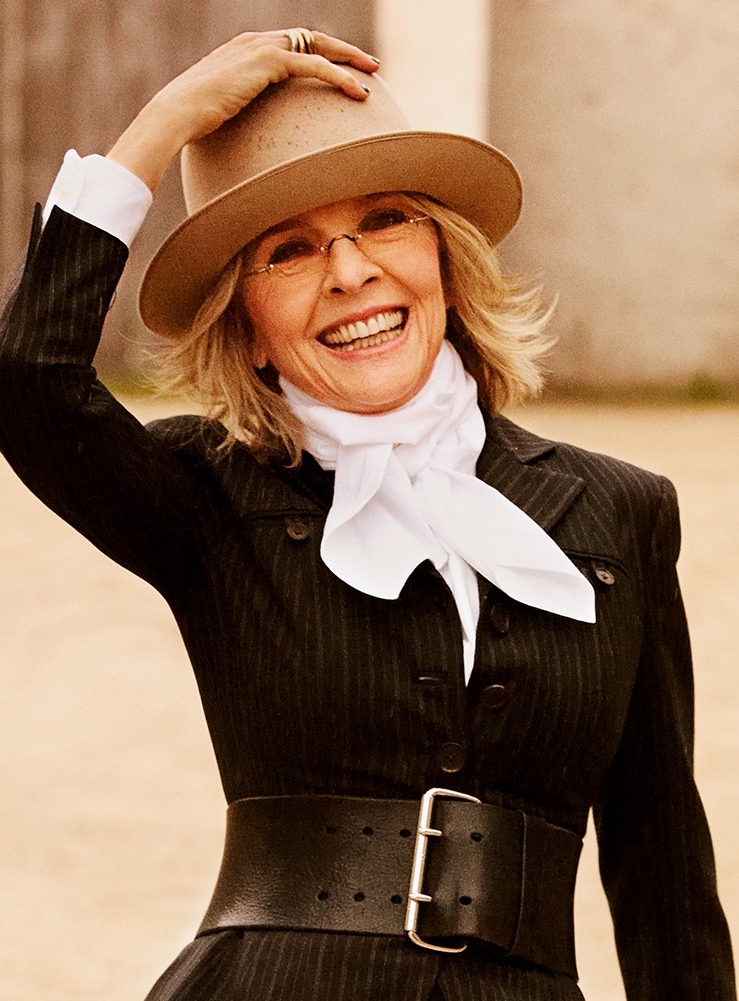
7. **”Reds”: A Transformative Role and Second Oscar Nod**By 1979, Diane Keaton’s extensive and fruitful working relationship with Woody Allen reached a temporary pause with “Manhattan,” their last major collaboration until 1993. This shift marked a new chapter in her personal and professional life. In 1978, she became romantically involved with Warren Beatty, a relationship that would soon lead to another pivotal artistic endeavor.
Beatty cast Keaton opposite him in the ambitious 1981 epic historical drama, “Reds.” In the film, Keaton delivered a compelling performance as Louise Bryant, a fiercely independent journalist and feminist. The narrative followed Bryant as she fled her husband to collaborate with radical journalist John Reed (portrayed by Beatty) and later ventured into Russia to find him as he chronicled the tumultuous Russian Civil War. “Reds” was a project of immense scope, with Beatty having begun its development in the 1960s, undertaking historical research and interviews by the early 1970s, before filming finally commenced in 1979.
Keaton’s portrayal of Louise Bryant was a deeply challenging one. In a 2006 Vanity Fair story, she described her role as “the everyman of that piece, as someone who wanted to be extraordinary but was probably more ordinary… I knew what it felt like to be extremely insecure.” The film’s assistant director, Simon Relph, later commented on the demanding nature of the role for Keaton, stating that “[she] almost got broken,” a testament to the emotional intensity she poured into the character.
“Reds” opened to widespread critical acclaim, and Keaton’s performance, in particular, garnered immense praise. The New York Times lauded her work, proclaiming that Keaton was “nothing less than splendid as Louise Bryant – beautiful, selfish, funny and driven. It’s the best work she has done to date.” Her ability to embody such a complex and multifaceted character, navigating the tumultuous political and personal landscape of the era, was universally recognized as a career highlight.
Roger Ebert echoed this sentiment, calling Keaton “a particular surprise.” He reflected on her established persona, noting, “I had somehow gotten into the habit of expecting her to be a touchy New Yorker, sweet, scared, and intellectual. Here, she is just what she needs to be: plucky, healthy, exasperated, loyal, and funny.” Her transformative performance earned Diane Keaton her second Academy Award nomination for Best Actress, solidifying her reputation not just as a comedic force, but as a dramatic actress of profound capabilities.
Read more about: Rewind & Relive: 15 Iconic Movies So Good, You’ll Seriously Wish for a Time Machine to Watch Them Again!
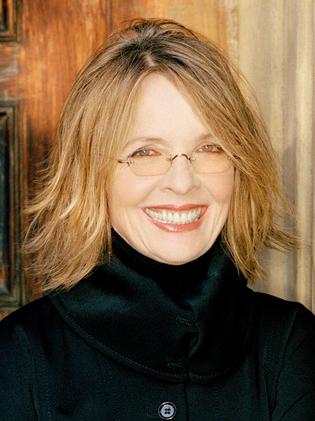
8. **The Depth of “Shoot the Moon”: A Masterclass in Marital Drama**Following the critical triumph of “Reds” and her second Oscar nomination, Diane Keaton continued to explore complex dramatic roles, further solidifying her reputation as an actress of profound emotional depth. The very next year, in 1982, she starred opposite Albert Finney in the domestic drama “Shoot the Moon,” a film that delved into the agonizing dissolution of a marriage with an unflinching gaze.
In “Shoot the Moon,” Keaton portrayed Faith Dunlap, a woman grappling with the unraveling of her long-term marriage to George. The film meticulously charted the painful separation and subsequent affairs of the couple, devastating their four children caught in the emotional crossfire. It was a raw, revealing portrayal of a family fractured by personal turmoil, offering audiences a poignant, often uncomfortable, reflection of domestic strife.
Keaton’s performance in this film was met with fervent critical praise, with esteemed critics singling out her exceptional work. Pauline Kael of The New Yorker declared the film “perhaps the most revealing American movie of the era,” and lauded Keaton, stating she “may be a star without vanity: she’s so completely challenged by the role of Faith that all she cares about is getting the character right.” Kael further observed a new dimension to Keaton’s acting, noting, “Diane Keaton acts on a different plane from that of her previous film roles; she brings the character a full measure of dread and awareness and does it in a special, intuitive way that’s right for screen acting.”
David Denby of New York magazine similarly commended her, finding Keaton “perfectly relaxed and self-assured.” He highlighted her ability to unearth deep emotional layers, adding, “Keaton has always found it easy enough to bring out the anger that lies beneath the soft hesitancy of her surface manner, but she’s never dug down and found this much pain before.” This powerful portrayal garnered Keaton a second consecutive Golden Globe nomination for Best Actress in a Motion Picture – Drama, a testament to her commanding presence in serious roles.
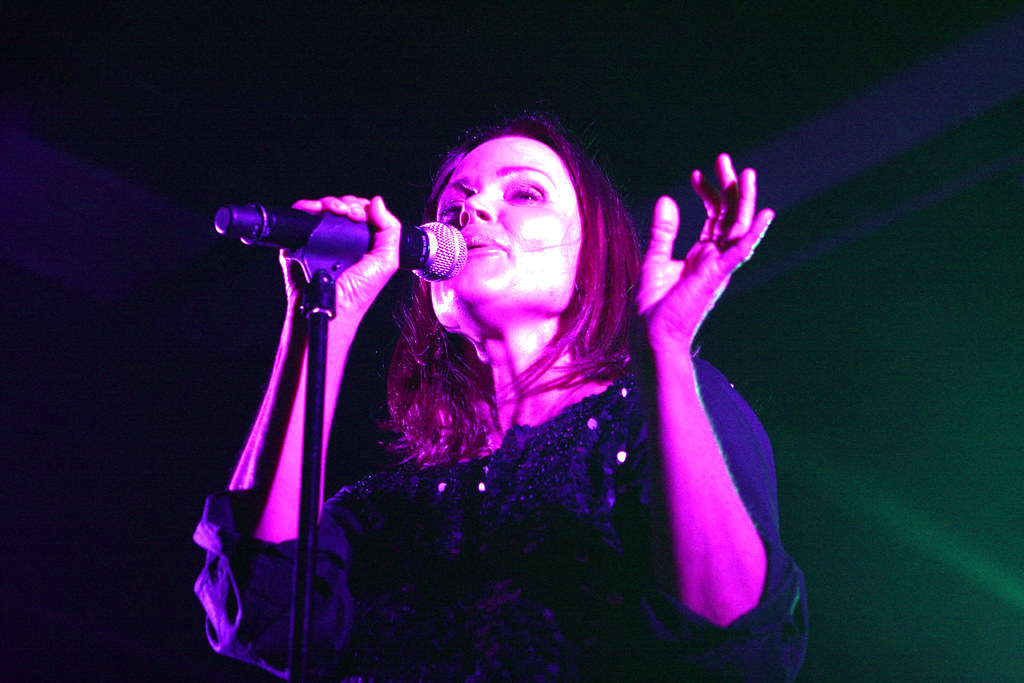
9. **Beyond Performance: Directorial Ventures and Genre Exploration**While her dramatic prowess continued to shine, the 1980s also saw Keaton venture into new cinematic territories, both in front of and behind the camera. In 1984, she took on a radical departure from her established persona by starring in “The Little Drummer Girl,” her first foray into the thriller and action genre. The film, however, proved to be both a financial and critical disappointment, with some critics suggesting Keaton was miscast, as one review from The New Republic asserted, “the title role, the pivotal role, is played by Diane Keaton, and around her the picture collapses in tatters. She is so feeble, so inappropriate.”
Yet, the very same year, Keaton delivered another acclaimed performance in “Mrs. Soffel,” a drama based on a true story. Here, she portrayed a repressed prison warden’s wife who finds herself falling in love with a convicted murderer and orchestrating his escape. This role allowed her to return to the psychological depth where she excelled, receiving positive reviews and demonstrating her ability to navigate both artistic missteps and triumphs with grace.
Beyond her acting endeavors, Keaton pursued another creative passion: directing. In 1987, she directed and edited her first feature film, “Heaven,” a documentary that explored various perspectives on the possibility of an afterlife. This experimental project met with mixed critical reactions, with The New York Times describing it as “a conceit imposed on its subjects,” yet it showcased her willingness to explore narrative and thematic challenges from a different vantage point.
Her directorial ambition didn’t stop there. Over the subsequent four years, Keaton expanded her work behind the camera, helming music videos for artists like Belinda Carlisle, including the iconic video for “Heaven Is a Place on Earth.” She also directed two television films starring Patricia Arquette and took on episodes for acclaimed series such as “China Beach” and “Twin Peaks,” establishing a multifaceted artistic identity that extended far beyond her renowned acting career.
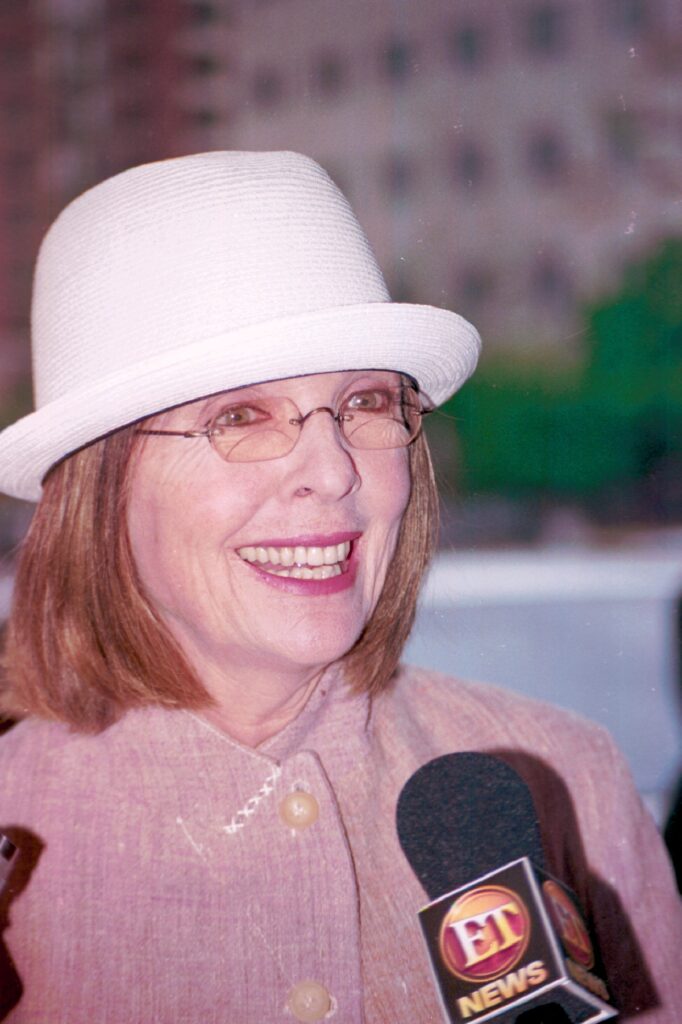
10. **The Comedic Resurgence: From “Baby Boom” to “Father of the Bride”**The late 1980s marked a significant comedic resurgence for Diane Keaton, as she found new avenues to showcase her unique blend of wit and vulnerability. After the moderately successful adaptation of “Crimes of the Heart” in 1986, she starred in “Baby Boom” in 1987, her inaugural collaboration with writer-producer Nancy Meyers, which would blossom into several beloved projects. In this film, Keaton portrayed a driven Manhattan career woman whose life is comically upended when she unexpectedly becomes the caretaker of a toddler.
“Baby Boom” achieved modest box-office success, and Keaton’s performance was lauded as a highlight. Pauline Kael again praised her, calling it “a glorious comedy performance that rides over many of the inanities in this picture.” Kael noted Keaton’s ability to maintain her character’s complexity, stating, “Keaton is smashing: the Tiger Lady’s having all this drive is played for farce and Keaton keeps you alert to every shade of pride and panic the character feels. She’s an ultra-feminine executive, a wide-eyed charmer, with a breathless ditziness that may remind you of Jean Arthur in The More The Merrier.”
By the 1990s, Keaton had firmly established herself as one of Hollywood’s most versatile actors, often transitioning into more mature roles and frequently embodying matriarchs within middle-class families. This period included her cherished role alongside Steve Martin in the 1991 family comedy “Father of the Bride,” a commercial hit. She later reprised her role in the 1995 sequel, portraying a woman who experiences a middle-aged pregnancy concurrently with her daughter, further cementing her appeal in heartwarming family narratives.
This decade also saw a delightful reunion with Woody Allen in the 1993 black comedy mystery “Manhattan Murder Mystery,” her first major film role with Allen since 1979. Originally intended for Mia Farrow, Keaton stepped into the part, and her performance was met with critical praise. Todd McCarthy of Variety noted that she “nicely handles her sometimes buffoonish central comedic role,” while David Ansen of Newsweek enthusiastically declared, “On screen, Keaton and Allen have always been made for each other: they still strike wonderfully ditsy sparks.” Her work earned her a Golden Globe nomination, proving their enduring on-screen chemistry.
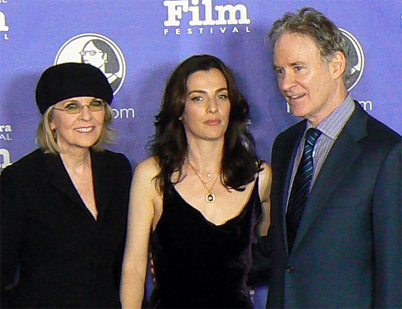
11. **”The First Wives Club” and “Marvin’s Room”: A Testament to Versatility**The mid-1990s were a particularly illustrative period for Diane Keaton’s incredible range, showcasing her ability to transition seamlessly between broad comedic triumphs and deeply poignant dramas. In 1996, she starred alongside Goldie Hawn and Bette Midler in the runaway hit comedy “The First Wives Club,” a film that resonated profoundly with audiences and achieved significant commercial success.
“The First Wives Club” became a cultural phenomenon, grossing an impressive $105 million at the North American box office and developing a devoted cult following among middle-aged women. Keaton, who famously claimed making the film “saved [her] life,” played one of three “first wives” seeking retribution after being divorced by their husbands for younger women. Critics lauded her performance, with the San Francisco Chronicle calling her “probably [one of] the best comic film actresses alive” for her portrayal of the neurotic yet determined Annie Paradis.
In the same year, Keaton demonstrated her profound dramatic capabilities once more in “Marvin’s Room,” an adaptation of Scott McPherson’s play. She starred as Bessie, a woman battling leukemia, opposite Meryl Streep, who played her estranged sister, and Leonardo DiCaprio as Streep’s rebellious son. This role presented a stark contrast to the lighthearted revenge comedy of “The First Wives Club,” demanding a performance of quiet dignity and intense emotional vulnerability.
Her portrayal of Bessie garnered immense critical acclaim, earning Keaton her third Academy Award nomination. Roger Ebert observed, “Streep and Keaton, in their different styles, find ways to make Lee and Bessie into much more than the expression of their problems.” Keaton herself acknowledged the role’s immense challenge, stating that understanding the mentality of a person with a terminal illness was the biggest hurdle, yet she navigated it with a nuanced and deeply moving performance.
Read more about: Beyond the Bowler Hat: A Definitive Look at Diane Keaton’s 12 Greatest Films and Enduring Legacy
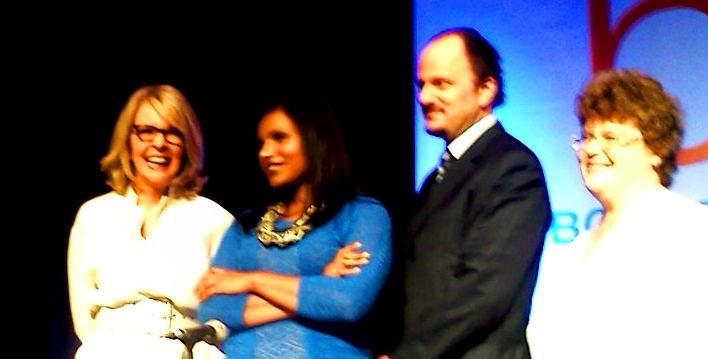
12. **The 2000s Resurgence: “Something’s Gotta Give” and Renewed Stardom**The new millennium brought with it a glorious resurgence for Diane Keaton, particularly with the 2003 romantic comedy “Something’s Gotta Give,” directed by her frequent collaborator Nancy Meyers. Co-starring Jack Nicholson, the film captivated audiences with its mature love story, centering on a middle-aged playwright who unexpectedly falls for her daughter’s much older boyfriend.
Meyers revealed that studios initially hesitated to back the project, claiming “no one wanted to see people of a certain age be y.” However, Keaton passionately championed the film’s premise, telling Ladies’ Home Journal, “Let’s face it, people my age and Jack’s age are much deeper, much more soulful, because they’ve seen a lot of life. They have a great deal of passion and hope—why shouldn’t they fall in love? Why shouldn’t movies show that?” This film proved a resounding success, demonstrating a strong appetite for intelligent, character-driven romantic comedies featuring seasoned stars.
“Something’s Gotta Give” was a significant box office triumph, accumulating $125 million in North America and cementing its place as a beloved romantic comedy. Critics widely praised the chemistry and performances of its lead actors. Roger Ebert noted, “Keaton and Nicholson bring so much experience, knowledge and humor to their characters that the film works in ways the screenplay might not have even hoped for,” highlighting the depth and authenticity they brought to their roles.
Keaton’s endearing and authentic performance in the film earned her widespread accolades, including her fourth Academy Award nomination for Best Actress. This triumph not only reaffirmed her status as a leading lady but also celebrated her enduring appeal and ability to connect with audiences through roles that reflected real-life complexities and the timeless pursuit of love and happiness at any age.
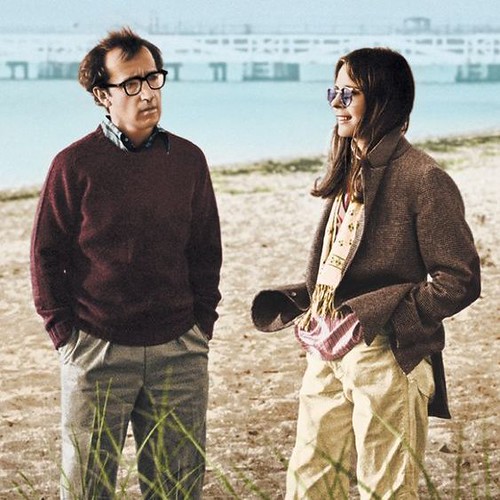
13. **Enduring Presence: Ensemble Comedies and Acclaimed Voice Work**Following her Oscar-nominated turn in “Something’s Gotta Give,” Diane Keaton continued to grace the screen, maintaining a vibrant and versatile presence throughout the 2000s and into the 2010s. In 2005, she starred in the ensemble comedy “The Family Stone,” playing the matriarch of a large New England family reuniting for the Christmas holidays. Her portrayal of a breast cancer survivor, anchoring the family dynamics, garnered her a second Satellite Award nomination. Peter Travers of Rolling Stone commended her, writing, “Keaton, a sorceress at blending humor and heartbreak, honors the film with a grace that makes it stick in the memory.”
Keaton continued her streak in comedies, albeit with mixed critical reception, in films like “Because I Said So” (2007) and “Mama’s Boy” (2007), showcasing her commitment to lighthearted roles and her enduring appeal in the genre. Despite varying critical opinions, these projects underscored her consistent work ethic and her desire to entertain audiences across a spectrum of comedic styles, from broad farces to more intimate dramedies.
Perhaps one of her most beloved roles in this later period came in an unexpected form: voice work. In 2016, Keaton lent her distinctive voice to the character of Jenny, the kind and quirky mother of the amnesiac fish Dory, in Disney and Pixar’s highly anticipated sequel, “Finding Dory.” The animated film was an enormous critical and commercial success, grossing over $1 billion worldwide and setting numerous records, including the biggest animated opening of all time in North America. Keaton’s warm and memorable vocal performance added another dimension to her celebrated career.
Her versatility extended to television as well, with a notable role in the HBO eight-part series “The Young Pope” in 2016. In this critically acclaimed miniseries, Keaton portrayed Sister Mary, a nun who had raised the newly elected Pope, played by Jude Law, and significantly influenced his path to the papacy. This foray into prestigious television demonstrated her continued willingness to explore diverse characters and narratives, further solidifying her status as a multifaceted artist who transcended traditional cinematic boundaries.
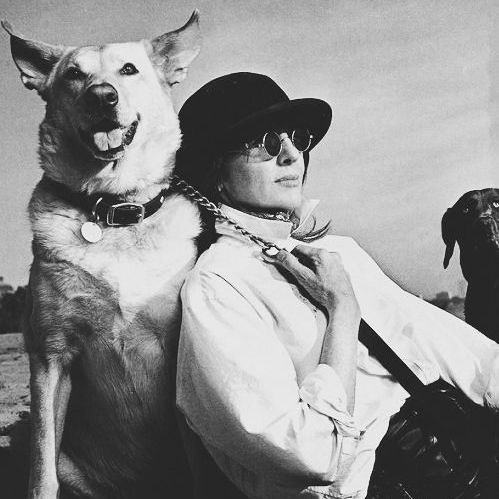
14. **Final Chapters: “Book Club” and a Legacy Etched in Hollywood History**As the years progressed, Diane Keaton continued to captivate audiences, particularly in roles that celebrated women in their later stages of life. A significant highlight of her later career was the 2018 romantic comedy “Book Club,” where she starred alongside Jane Fonda, Candice Bergen, and Mary Steenburgen. The film’s premise, revolving around four friends whose lives are invigorated after reading “Fifty Shades of Grey” in their monthly book club, resonated deeply with mature audiences, demonstrating that stories of older women could be both relevant and commercially successful.
Despite receiving mixed reviews from critics, who felt that “Book Club” only “intermittently rises to the level of its impressive veteran cast,” the film was a substantial commercial success. It grossed over $100 million worldwide, marking Keaton’s biggest non-voice role commercial success since “Something’s Gotta Give” in 2003. This achievement underscored her remarkable drawing power and the unwavering connection she had with her fan base, proving her appeal was truly timeless.
Keaton’s final film appearances continued her engagement with comedic ensemble pieces, including the 2019 film “Poms,” where she played a woman with cancer who starts a cheerleading squad in a retirement home, and the 2024 film “Summer Camp.” These roles, even as her career gracefully wound down, continued to embody her signature blend of endearing eccentricity and emotional warmth, leaving an indelible mark on every project she touched.
Diane Keaton’s journey through Hollywood was a masterclass in authenticity, resilience, and an unwavering commitment to artistic freedom. From her breakout role as the unconventional Annie Hall to her dramatic turns and her enduring comedic presence, she crafted a career defined by bold choices and unforgettable characters. Her influence on cinema, fashion, and the portrayal of women on screen is immeasurable, ensuring that her legacy will continue to inspire and entertain for generations to come. She was not just an actress; she was a cultural phenomenon, a muse, and a beloved figure whose spirit will forever shine brightly in the annals of cinematic history.

